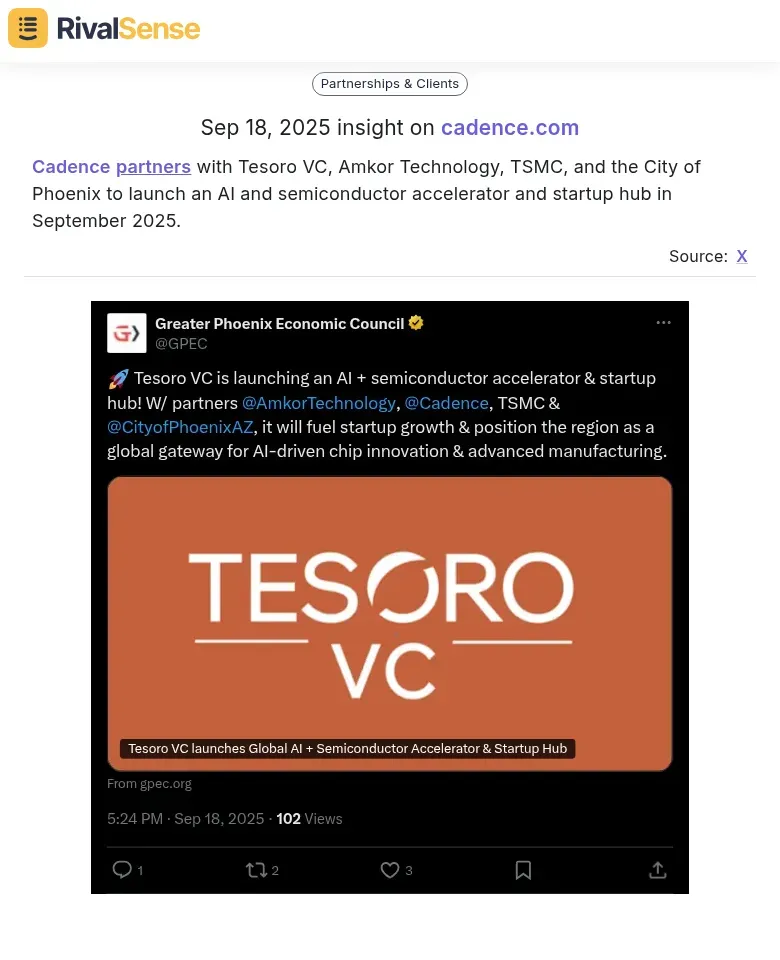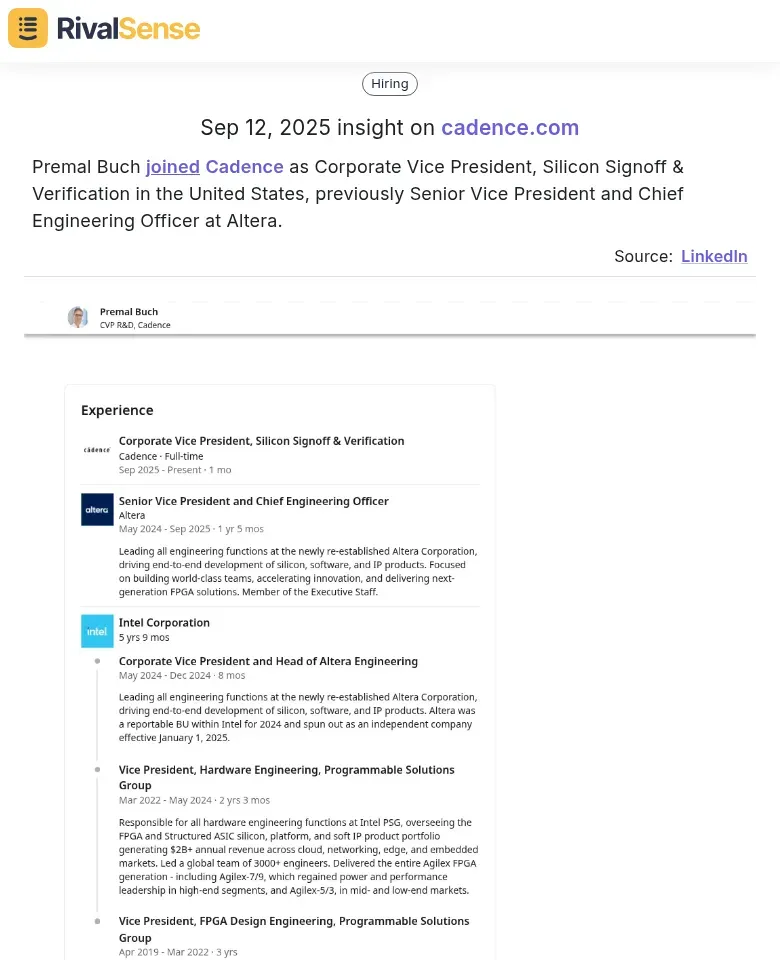Key Account Revenue Tracking in EDA: A Strategic Guide for Executives
Understanding Key Account Revenue Tracking in EDA
Key account revenue tracking in EDA involves systematically monitoring and analyzing revenue streams from your most valuable semiconductor design customers. This is critical because EDA accounts typically represent 80% of revenue from just 20% of clients. The unique challenges include: 1) Long sales cycles (6-18 months) due to complex technical evaluations and multi-stakeholder approvals, 2) Technical complexity requiring deep product expertise and customization, and 3) Global operations with distributed teams across time zones.
📊 Practical tip: Implement a quarterly review cadence for each key account, tracking not just current revenue but also pipeline health, product usage patterns, and relationship strength scores. Shift from reactive tracking (waiting for renewals) to predictive approaches using AI tools that analyze usage data to forecast churn risk 90 days in advance.
✅ Quick Checklist:
- Monitor login frequency
- Track feature adoption rates
- Analyze support ticket trends
- Measure executive engagement levels
Essential Metrics and KPIs for EDA Revenue Tracking
Effective EDA revenue tracking requires monitoring three critical metric categories. First, track essential revenue metrics: Customer Lifetime Value (CLV) to identify high-value accounts (calculate as: average purchase value × purchase frequency × customer lifespan), revenue growth rate (month-over-month percentage change), and account profitability (revenue minus acquisition and service costs).
Second, monitor engagement KPIs: app usage frequency (daily/weekly active users), feature adoption rates (percentage of users utilizing key features), and support ticket volumes (track trends and resolution times). Tip: Set up automated alerts for usage drops exceeding 15%.
Third, implement predictive scoring: develop churn risk scores (0-100 scale based on usage patterns, support interactions, and payment history) and opportunity scores (identifying accounts with expansion potential based on feature usage gaps and engagement levels).
Leveraging Strategic Partnerships for Revenue Insights
Strategic partnerships in EDA serve as powerful indicators of market direction and revenue opportunities. Analyze partnership expansions to identify emerging trends in computational fluid dynamics and multi-physics simulation—key growth areas. Monitor competitor collaborations with foundries to anticipate customer needs for advanced node support, enabling you to align account strategies with upcoming design requirements.
🎯 Real Example: Cadence recently partnered with Tesoro VC, Amkor Technology, TSMC, and the City of Phoenix to launch an AI and semiconductor accelerator and startup hub. This type of partnership insight reveals market expansion strategies and potential new revenue streams.

✅ Practical Steps:
- Track partnership announcements quarterly
- Map partnership types (technology integration vs. market expansion) to revenue impact
- Incorporate partnership data into predictive models
- Use partnership-driven market signals to adjust revenue forecasts
Learning from Talent Movements and Executive Transitions
Executive movements in the EDA industry serve as powerful indicators of strategic shifts and potential account vulnerabilities. When key executives leave competitors, it often signals internal challenges or new strategic directions that could impact customer relationships.
🔍 Real Example: Khalid Ansari left Cadence as Corporate VP to join Synopsys Inc as Senior Vice President. Such executive moves can indicate strategic realignments and create opportunities to engage with potentially dissatisfied customers.

✅ Practical Steps:
- Set up alerts for executive names at top EDA firms
- Monitor LinkedIn for profile changes and new connections
- Track hiring patterns through job postings
- Focus on customer-facing roles as their movements most directly impact revenue streams
Implementing Predictive Analytics for Proactive Revenue Management
Implementing predictive analytics transforms revenue management from reactive to proactive. Start by integrating AI-driven tools that analyze customer behavior patterns and forecast account growth potential. These platforms use machine learning to identify expansion opportunities and churn risks before they materialize.
📈 Checklist for Implementation:
- Map all customer touchpoints for data collection
- Implement predictive scoring for at-risk accounts
- Create automated workflow triggers for sales teams
- Establish weekly review cadence for predictive insights
- Continuously refine models with new data
Building a Sustainable Revenue Tracking Framework
Building a sustainable revenue tracking framework requires three core pillars: data integration, team enablement, and measurable ROI. Start by creating a centralized system that combines CRM data, usage metrics, and market intelligence.
👥 Real Example: Premal Buch joined Cadence as Corporate Vice President, previously from Altera. Tracking such key hires helps understand competitor strengthening in specific domains and potential market shifts.

✅ Framework Essentials:
- Centralized data integration system
- Comprehensive training programs for sales teams
- Measurable ROI through specific KPIs
- Quarterly reviews to correlate insights with outcomes
Take Your Revenue Tracking to the Next Level
Effective key account revenue tracking requires not just internal data but also comprehensive competitive intelligence. Understanding partnership movements, executive transitions, and strategic hires provides crucial context for your revenue strategies.
🚀 Ready to enhance your competitive intelligence? Try RivalSense for free and get your first competitor report today. Track product launches, pricing updates, executive moves, partnerships, and media mentions—all delivered in a concise weekly email that keeps you ahead of the competition.
Get Started with RivalSense Today
📚 Read more
👉 Beginner's Guide to Competitor Partnership & Client Insights: Turn Intelligence Into Strategy
👉 CyberGhost VPN's Pricing Strategy Shift: A Competitor Analysis Deep Dive
👉 Key Account Management Models: The Ultimate 2025 Guide
👉 5 Game-Changing PR Key Account Sales Tracking Hacks for 2025
👉 How Real-Time Executive Intelligence Drives Acquisition Strategy: CrowdStrike Case Study
